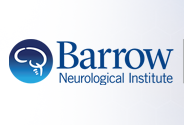Eliminating unnecessary routine head CT scanning in neurologically intact mild traumatic brain injury patients: implementation and evaluation of a new protocol
Document Type
Article
Abstract
OBJECTIVE The utility of routine repeat head CT (HCT) scans in the management of minimal head injury (MHI) patients with an intracranial hemorrhage (ICH) has been questioned in multiple studies. All these studies analyzed this by obtaining a repeat HCT study, and none examined the effects of eliminating these routine HCT studies in neurologically intact patients. The authors' institution implemented a new "Neurologic Observation without Repeat HCT" (NORH) protocol with no repeat HCT scanning for patients admitted for MHI and ICH whose neurological status was maintained or improved to a Glasgow Coma Scale score of 15 at 24 hours after admission. This purpose of this study was to assess the outcomes and safety of this novel protocol. METHODS Records of patients who sustained blunt trauma MHI and an ICH and/or skull fracture on initial HCT between January 1, 2009, and December 31, 2012, were retrieved from the trauma registry of a Level I trauma center. The authors analyzed 95 patients in whom the NORH protocol was followed. Outcome measures included death, emergency department readmission, neurosurgical intervention, delayed repeat HCT, and length of stay. RESULTS The NORH protocol was followed for 95 patients; 83% of the patients were male, the average age was 38 ± 16.0 years old, and the most common cause of trauma was assault (35%). Of the 95 patients in whom the NORH protocol was followed, 8 (8%) had a delayed repeat HCT study (> 24 hours) after admission, but none resulted in neurosurgical intervention because of progression of ICH. The average length of stay was 4 ± 7.2 days. None of the patients were readmitted to the hospital. CONCLUSIONS Implementation of the NORH protocol (eliminating routine follow-up HCT) resulted in very low rates of delayed neurological deterioration, no late neurosurgical interventions resulting from ICH progression, very few emergency department revisits, and no readmissions. For a select group of MHI patients with ICH, the NORH protocol is safe and effective, and can reduce radiation exposure and costs.
Medical Subject Headings
Adult; Brain Concussion (diagnostic imaging); Clinical Protocols; Female; Humans; Male; Retrospective Studies; Tomography, X-Ray Computed; Unnecessary Procedures (statistics & numerical data)
Publication Date
9-1-2016
Publication Title
Journal of neurosurgery
E-ISSN
1933-0693
Volume
125
Issue
3
First Page
667
Last Page
73
PubMed ID
26771855
Digital Object Identifier (DOI)
10.3171/2015.9.JNS151379
Recommended Citation
Anandalwar, Seema P.; Mau, Christine Y.; Gordhan, Chirag G.; Majmundar, Neil; Meleis, Ahmed; Prestigiacomo, Charles J.; and Sifri, Ziad C., "Eliminating unnecessary routine head CT scanning in neurologically intact mild traumatic brain injury patients: implementation and evaluation of a new protocol" (2016). Neurosurgery. 2194.
https://scholar.barrowneuro.org/neurosurgery/2194


